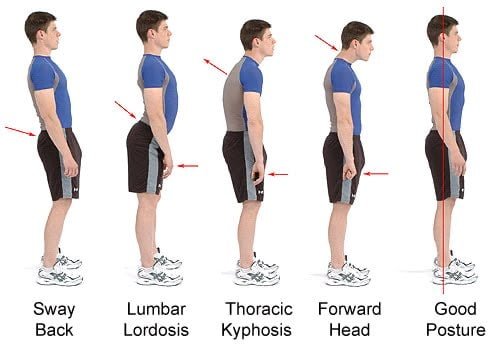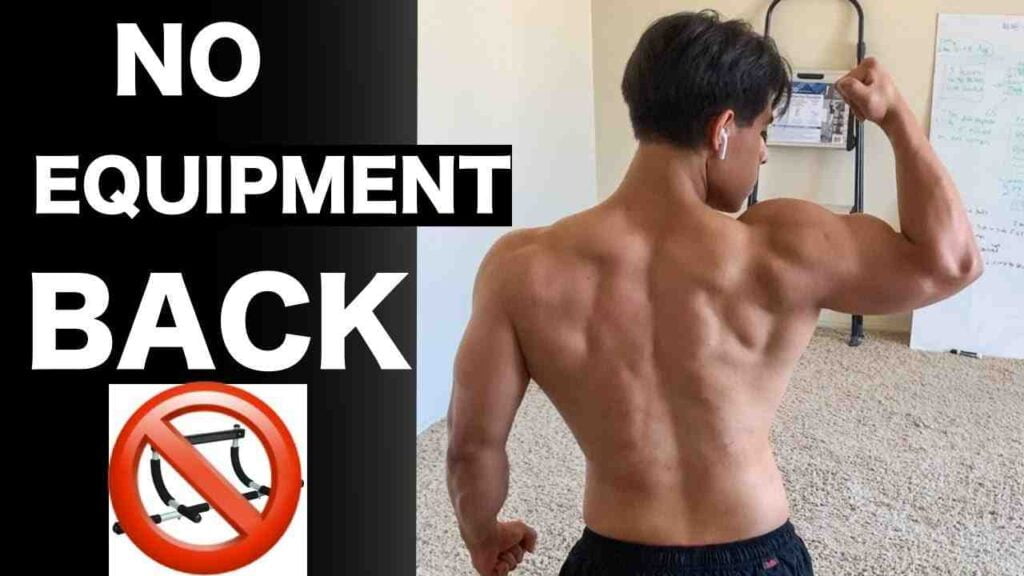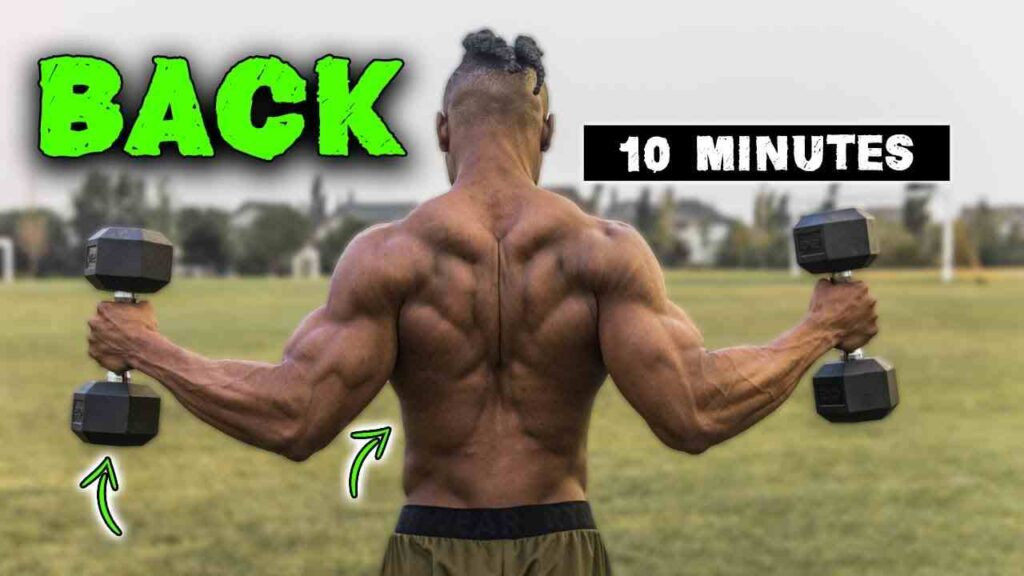Introduction
Welcome to our comprehensive guide on lower trap exercises! If you’ve been looking to strengthen your back, improve your shoulder function, and enhance your overall posture, you’ve come to the right place. In this article, we will delve into the world of lower trap exercises and stretches, providing you with the knowledge and tools to achieve a stronger and healthier back.
The lower trapezius muscles, often referred to as the “lower traps,” play a crucial role in stabilizing the scapulae and maintaining proper shoulder movement. Unfortunately, these muscles are often overlooked in favor of more prominent muscle groups. Neglecting the lower traps can lead to imbalances, posture issues, and even shoulder injuries.
SHOP FOR THE ADJUSTABLE DUMBBELL SET ON AMAZON
The good news is that with the right exercises and stretches, you can target and strengthen the lower traps effectively. Whether you are an athlete seeking to improve your performance or an individual aiming to alleviate back pain and enhance your daily activities, incorporating lower trap exercises into your fitness routine can make a significant difference.
In this article, we will provide easy-to-understand explanations of the exercises and stretches, ensuring that even beginners can grasp the concepts. We will emphasize the importance of proper form and technique to prevent injuries and maximize the benefits of each exercise.
Understanding the Lower Traps
The lower trapezius muscles, commonly referred to as the lower traps, are an essential part of the trapezius muscle group located in the upper back and neck. Understanding the anatomy and function of these muscles is crucial to appreciate their role in maintaining optimal shoulder and back health.
Anatomy of the Lower Trapezius Muscles
The lower trapezius muscles are a part of the trapezius muscle group, which is located in the upper back and neck region. The trapezius muscle is a large, diamond-shaped muscle that extends from the base of the skull to the middle of the spine and laterally to the shoulder blades. It is divided into three parts: the upper, middle, and lower trapezius muscles. The focus here is on the lower trapezius.
The lower trapezius muscle originates from the spinous processes of the thoracic vertebrae (T1-T4) and inserts into the spine of the scapula (shoulder blade). It works in conjunction with the middle and upper trapezius muscles to provide support and movement to the shoulder girdle.
Role in Shoulder and Back Function
The lower trapezius plays a crucial role in stabilizing and controlling the movement of the scapula, which is essential for proper shoulder function. When the lower traps are strong, they help retract and depress the scapulae, pulling them downward and inward towards the spine. This action is vital for maintaining good posture, especially when sitting or standing for extended periods.
SHOP FOR THE RESISTANCE BAND ON AMAZON
Furthermore, the lower trapezius works synergistically with other muscles in the shoulder and back region to facilitate proper shoulder movements, such as arm elevation and rotation. It contributes to a balanced and coordinated movement of the shoulder joint, reducing the risk of shoulder injuries and impingements.
C. Common Issues and Injuries Associated with Weak Lower Traps
Weakness in the lower trapezius can lead to various issues, particularly in the shoulders and upper back. Some common problems associated with weak lower traps include:
- Rounded Shoulders: Weak lower trapezius can contribute to rounded shoulders, a condition where the shoulders slouch forward, leading to poor posture and potential neck and shoulder pain.
- Shoulder Impingement: When the lower trapezius is weak, the shoulder blade may not properly position itself during arm movements, leading to impingement of tendons and bursae in the shoulder joint, causing pain and inflammation.
- Upper Back Pain: Inadequate support from the lower traps can result in increased stress on the upper back muscles, leading to discomfort and pain in the upper back region.
- Limited Shoulder Mobility: A lack of lower trapezius strength can restrict shoulder mobility, making it challenging to perform daily tasks that involve overhead movements.
- Scapular Dyskinesis: Weak lower traps can lead to an abnormal movement pattern of the scapula, known as scapular dyskinesis. This can further exacerbate shoulder issues and hinder athletic performance.
Understanding the anatomy and function of the lower trapezius muscles is crucial for appreciating the significance of incorporating targeted lower trap exercises and stretches into a comprehensive fitness routine. Strengthening and stretching these muscles can improve posture, reduce the risk of injuries, and enhance overall shoulder and back function.
Strengthening Lower Trap Exercises

Here we will explore five effective lower trap exercises that can help strengthen your back and improve overall shoulder stability. Incorporating these exercises into your workout routine will not only target the lower trapezius muscles but also contribute to better posture and reduced risk of shoulder injuries.
1. Prone Y Raises
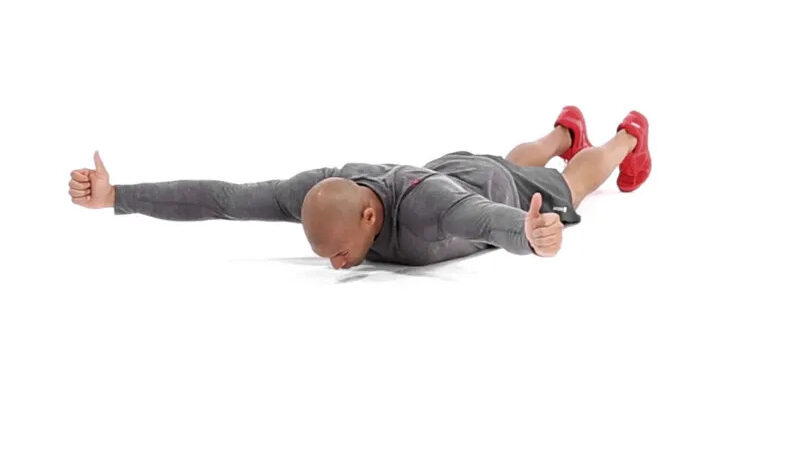
Prone Y raises target the lower traps, helping to improve shoulder stability and posture. Lie face down on an exercise mat with arms extended in a Y shape, and lift them off the ground, engaging the lower traps.
How-to:
- Lie face down with your forehead on the mat and arms extended overhead, forming a Y shape with your thumbs pointing upward.
- Keep your neck in a neutral position and engage your core.
- Lift your arms and upper chest off the mat, squeezing your shoulder blades together.
- Hold for a brief moment at the top and then lower down with control.
- Repeat for the desired number of repetitions.
Tips:
- Avoid shrugging your shoulders; keep them relaxed and away from your ears.
- Focus on the engagement of the lower traps to lift your arms, rather than using your upper back muscles.
2. Face Pulls
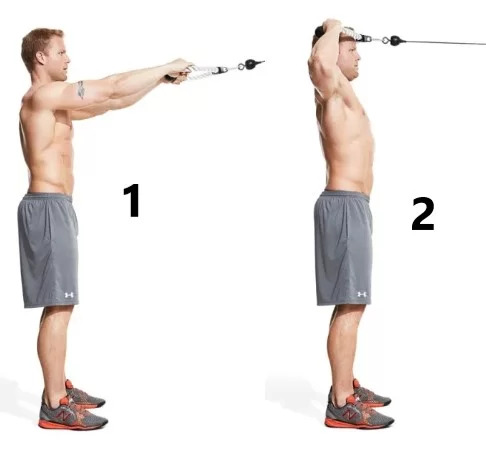
Face pulls are excellent for targeting the rear shoulders and lower traps, promoting balanced shoulder strength and better posture.
How-to:
- Attach a resistance band or cable to a stable anchor at shoulder height.
- Stand with your feet shoulder-width apart, holding the band or handles with an overhand grip.
- Step back to create tension in the band and extend your arms straight ahead.
- Pull the band towards your face by squeezing your shoulder blades together and bending your elbows out to the sides.
- Pause when the band reaches your face, then slowly return to the starting position.
Tips:
- Keep your elbows at or above shoulder height throughout the movement.
- Focus on the contraction of the lower traps as you pull the band towards your face.
- Avoid leaning backward or arching your lower back during the exercise.
3. Row Variations
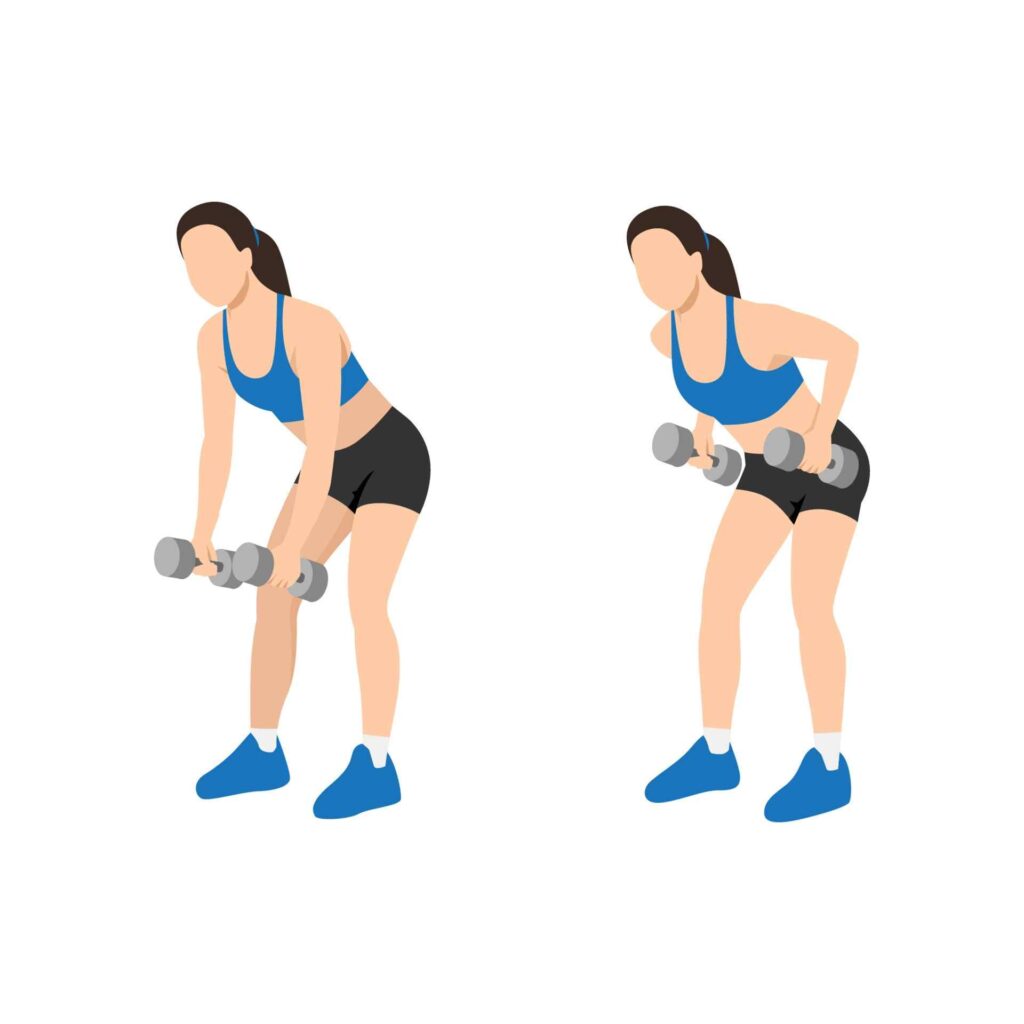
Rows work the entire back, including the lower traps, to enhance upper body strength and stability.
How-to (Dumbbell Bent-Over Rows):
- Hold a dumbbell in each hand with your palms facing inward.
- Hinge at your hips to bend forward, keeping your back straight and chest lifted.
- Engage your core and pull the dumbbells towards your ribcage by squeezing your shoulder blades together.
- Lower the dumbbells back down with control.
Tips:
- Maintain a neutral spine throughout the movement.
- Keep your elbows close to your body as you perform the row.
- Avoid using momentum; focus on the muscles’ contraction to lift the weights.
4. Scapular Retraction

Scapular retractions isolate and strengthen the lower traps, improving shoulder stability and posture.
How-to:
- Sit or stand with your back straight and shoulders relaxed.
- Squeeze your shoulder blades together as if trying to hold a pencil between them.
- Hold the squeeze for a few seconds, then release.
Tips:
- Perform scapular retractions regularly throughout the day to counteract the effects of prolonged sitting and poor posture.
- Focus on maintaining proper alignment and avoiding arching your back during the exercise.
5. Quadruped Arm Lifts

Quadruped arm lifts engage the lower traps and stabilize the core, contributing to a strong and balanced upper body.
How-to:
- Start on all fours with your wrists under your shoulders and knees under your hips.
- Lift one arm off the ground, extending it straight ahead while keeping your hips and shoulders level.
- Slowly lower the arm back down, then repeat on the other side.
Tips:
- Keep your spine neutral and engage your core to avoid excessive movement in your hips and lower back.
- Imagine reaching your arm long without hiking your shoulder towards your ear. Focus on stability and control throughout the exercise.
SHOP FOR THE FOAM ROLLER ON AMAZON
Remember to perform each exercise with proper form and technique to maximize results and reduce the risk of injury. Regularly including these lower trap exercises in your workouts will lead to improved posture, enhanced shoulder stability, and a stronger, more resilient upper body.
Proper Form and Technique
Proper form is crucial when performing lower trap exercises to maximize their effectiveness and prevent injuries. When you maintain the correct form, you ensure that the targeted muscles are being engaged optimally, reducing the risk of strain on other body parts.
Tips for Performing Lower Trap Exercises Safely
- Start with a Warm-up: Prior to beginning any lower trap exercises, it’s essential to warm up your muscles. Perform light cardio or dynamic stretches to increase blood flow and prepare your body for the workout.
- Focus on Scapular Retraction: In many lower trap exercises, scapular retraction is vital for targeting the muscles effectively. Squeeze your shoulder blades together during the movements to engage the lower traps properly.
- Engage Core Muscles: A strong core provides stability during exercises, reducing the risk of injuries. Engage your core by pulling your navel towards your spine throughout the exercises.
- Gradual Progression: If you are new to lower trap exercises, start with lighter resistance or bodyweight exercises. Gradually increase the intensity as your strength improves to avoid overstraining the muscles.
- Controlled Movement: Avoid using momentum to perform the exercises. Focus on controlled and deliberate movements to ensure the lower traps are being adequately engaged.
Common Mistakes to Avoid
- Shrugging Shoulders: Avoid shrugging your shoulders during exercises, as this shifts the focus away from the lower traps and places unnecessary strain on the neck and upper traps.
- Arching Back: Maintain a neutral spine position and avoid excessive arching of your back, especially during exercises that involve lying face down. Arching can lead to back discomfort and compromise the effectiveness of the workout.
- Overloading with Weight: If you’re using weights or resistance bands, avoid lifting too much weight too quickly. This can lead to improper form and potential injuries. Focus on quality over quantity.
- Neglecting Breathing: Pay attention to your breathing during exercises. Exhale during the exertion phase and inhale during the relaxation phase to maintain steady breathing and prevent unnecessary strain.
- Ignoring Pain or Discomfort: If you experience pain or discomfort during any exercise, stop immediately and consult a fitness professional or healthcare provider. Ignoring pain can exacerbate injuries and hinder your progress.
SHOP FOR THE YOGA BLOCKS ON AMAZON
By following these tips and avoiding common mistakes, you can ensure a safe and effective lower trap workout, helping you achieve a stronger and more stable back. Always listen to your body and make adjustments as needed to maintain proper form throughout your training.
Incorporating Lower Trap Stretches
Stretching the lower traps is essential for maintaining flexibility, improving posture, and preventing injuries. Here are some effective lower trap stretches that you can incorporate into your routine:
A. Doorway Stretch

- Stand facing an open doorway with your arms at your sides.
- Raise your arms to a 90-degree angle and place your forearms against the door frame.
- Take a small step forward with one foot to feel a gentle stretch across your chest and shoulders.
- Hold the stretch for 30 seconds to 1 minute while breathing deeply.
- Repeat on the other side.
B. Thread the Needle
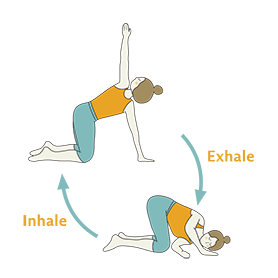
- Begin on all fours in a tabletop position.
- Reach your right arm underneath your body and across to the left side, resting your right shoulder and temple on the floor.
- Keep your left arm extended, and your left hand pressing into the ground to deepen the stretch.
- Hold for 30 seconds to 1 minute, feeling the stretch in your right shoulder blade and lower traps.
- Return to the starting position and repeat on the other side.
C. Cat-Cow Stretch
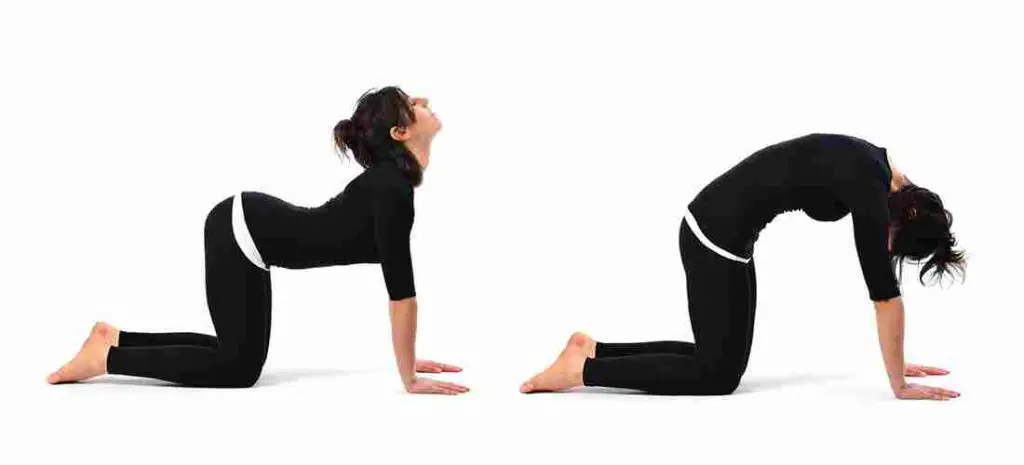
- Start on all fours in a tabletop position with your wrists under your shoulders and knees under your hips.
- Inhale as you arch your back, lifting your head and tailbone towards the ceiling (Cow Pose).
- Exhale as you round your back, tucking your chin and tailbone (Cat Pose).
- Repeat this flow for 10-15 repetitions, focusing on the movement in your upper back and shoulder blades.
D. Cross-Body Shoulder Stretch
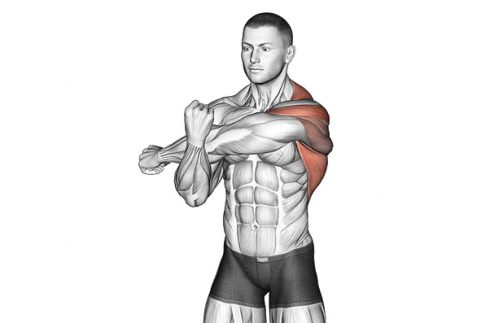
- Stand or sit with a straight back and shoulders relaxed.
- Bring your right arm across your chest and use your left hand to gently pull your right arm closer to your body.
- Hold the stretch for 20-30 seconds, feeling the stretch in your right shoulder and upper back.
- Repeat on the other side.
SHOP FOR THE MASSAGE GUN ON AMAZON
Remember to perform these stretches slowly and gently, avoiding any sudden or jerky movements. Aim to hold each stretch for at least 30 seconds to allow the muscles to relax and lengthen properly. Incorporating these lower trap stretches into your routine will help reduce tension and promote better shoulder and back mobility.
Importance of Stretching
Stretching is a crucial aspect of any fitness routine, including lower trap exercises. The importance of stretching lies in its ability to enhance flexibility, improve joint range of motion, and prevent injuries. Specifically, for the lower trapezius muscles, stretching helps to alleviate tension and tightness, promoting better posture and reducing the risk of strain.
By incorporating lower trap stretches into your workout regimen, you can lengthen and relax the muscles, which can be especially beneficial if you spend long hours in sedentary positions or engage in activities that place repetitive stress on the shoulders and back.
Stretching also aids in the recovery process after intense workouts, allowing the lower trapezius muscles to recover and rebuild more effectively. Additionally, it helps maintain muscle balance, as tight and overactive muscles can hinder the performance of weaker muscles. By addressing these imbalances through stretching, you can create a more stable and resilient shoulder and back region.
SHOP FOR THE LACROSSE BALLS ON AMAZON
Remember to perform each stretch with proper form and avoid bouncing or forcing movements, as this can lead to injury. Incorporating lower trap stretches alongside strengthening exercises will ensure that you achieve a well-rounded and effective workout routine for a stronger, healthier back.
FAQs
Q.1 Can I do lower trap exercises at home without equipment?
Ans. Yes, many lower trap exercises can be performed at home without the need for specialized equipment. Bodyweight exercises like Prone Y Raises, Face Pulls, and Scapular Retraction can effectively target the lower trapezius muscles without the use of weights. However, for added resistance, you can use resistance bands or light dumbbells if available.
Q.2 How often should I do lower trap workouts?
Ans. The frequency of lower trap workouts depends on your fitness level and overall training program. For beginners, starting with 2 to 3 sessions per week is sufficient. As you progress, you can gradually increase the frequency up to 4 to 5 times per week, allowing at least one day of rest between sessions to give your muscles time to recover and grow.
Q.3 Are there any alternatives to these exercises for beginners?
Ans. Yes, beginners or individuals with limited shoulder mobility can start with more straightforward movements like Shoulder Blade Squeezes or Quadruped Arm Lifts. These exercises provide a gentle introduction to lower trap activation and can help build foundational strength before moving on to more challenging exercises.
Q.4 Can lower trap exercises help with shoulder pain?
Ans. Yes, lower trap exercises can be beneficial for shoulder pain, especially if it is caused by weak or imbalanced muscles around the shoulder girdle. Strengthening and stretching the lower traps can improve posture, stability, and shoulder mechanics, which may alleviate pain and reduce the risk of future discomfort.
Q.5 What are some signs of a weak lower trap?
Ans. Weak lower traps can manifest in various ways, including:
- Rounded or slouched posture
- Shoulder blade winging (protruding outward from the back)
- Difficulty in maintaining proper scapular position during upper body movements
- Limited shoulder mobility and range of motion
- Increased tension or tightness in the neck and upper back
Conclusion
In conclusion, incorporating lower trap exercises into your fitness routine is essential for maintaining a strong and healthy back. These exercises target the lower trapezius muscles, which play a crucial role in shoulder stability and proper posture. By strengthening and stretching the lower traps, you can improve your overall upper body strength, reduce the risk of injuries, and alleviate shoulder and back pain.
Consistency is key when it comes to seeing results. Design a well-balanced lower trap workout routine that includes exercises like Prone Y Raises, Face Pulls, Rows, Scapular Retractions, and Quadruped Arm Lifts. Focus on performing these exercises with correct form and technique to maximize their effectiveness and prevent any potential injuries.
Remember to listen to your body and progress at a pace that suits you. Be patient and consistent in your efforts, and soon you will notice the positive impact of lower-trap exercises on your overall well-being. Strengthen and stretch your lower traps, and enjoy the benefits of a stronger, more resilient back for a healthier and more active lifestyle.

Good day, and welcome to Fitthour. My name is Shubham Vijay, and I am a certified personal trainer and nutrition coach with 6 years of experience in the fitness industry. At Fitthour, we specialize in types of training, such as strength training, cardio, or HIIT, and our mission is to help clients achieve their fitness goals and improve their overall health.

